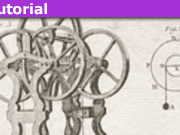How to Apply Newton’s Second Law to Variable Mass Systems
Introduction
The applicability of Newton’s second law in the oft-quoted “general form” $$\begin{align}\frac{d\mathbf{P}}{dt}=\mathbf{F}_{\text{ext}}\end{align}$$ was an issue in a recent thread (see post #4) in cases of systems with variable mass. The following example illustrates the kind of confusion that could arise from the (mis)application of Equation (1):
A rocket is hovering in place above ground near the Earth’s surface. Assume that the combustion gases are expelled at constant rate ##\beta=dm/dt## with velocity ##w## relative to the rocket. What condition must hold for the rocket to hover in place?
A novice might start with Equation (1) and go down the garden path only to reach a quick impasse as shown below.
Attempted solution
We start with the general form of Newton’s second law, Equation (1) $$\frac{dP}{dt}=M\frac{dV}{dt}+V\frac{dM}{dt}=-Mg$$ If the rocket is just hovering above the ground, one would set ##V=0## and ##\dfrac{dV}{dt}=0## to get ##\dots## $$0+0=-Mg~~?$$
In addition to the nonsensical result, it is disconcerting to note that the starting equation does not include anything related to the expelled gases which provide the thrust. One might also wonder whether Equation (1) is really a general formulation of Newton’s second law and, if it is, how it is applicable in physical situations where the system’s mass is variable.
We will address these issues and, in the end, it should be apparent to the reader that the problem is not with Equation (1) but with the lack of a clear perception of what ##P## represents. It is easy to say “the momentum of the system” but what exactly is that when two systems are entangled in the sense that mass from one is picked up by the other?
We will derive a Newton’s second law equation for the variable mass system of interest. Then we will formulate a recipe for using this equation. We will resolve the hovering rocket paradox and solve variable mass problems to illustrate the method. Finally, we will explore whether it is appropriate to label Equation (1) the general form of Newton’s second law.
Two entangled systems
We consider a system with momentum ##P_{\text{sys}}## that is the sum of subsystem momenta ##P_{\text{1}}## and ##P_{\text{2}}.## The subsystems must be chosen so that no external mass crosses their combined boundary. All mass lost by one subsystem is gained by the other: ##d(m_1+m_2)=0.## We adopt the convention that subscript 1 labels the system of interest. It consists of variable mass ##m_1## moving with velocity ##v_1## in the lab frame. Subsystem 2 has variable mass ##m_2##. Only the portion of ##m_2,## ##~dm_2,## that is exchanged with the subsystem 1 is of interest here. It has velocity ##v_2## in the lab frame.
We start with Equation (1) written (in one dimension for simplicity) in the form $$dP_{\text{sys}}=F_{\text{ext}}~dt.$$ Then, $$dP_{\text{sys}}=dP_{\text{1}}+dP_{\text{2}} = m_1~dv_1+v_1~dm_1+v_2~dm_2+m_2~dv_2.$$
Table of Contents
Disentangling the system of interest
We note that the external force consists of two forces, ##F_{\text{ext,1}}## acting on system 1 exclusively and ##F_{\text{ext,2}}## acting on system 2 exclusively. Then $$m_1~dv_1+v_1~dm_1+v_2~dm_2+m_2~dv_2=(F_{\text{ext,1}}+F_{\text{ext,2}})~dt.$$ In order to find the acceleration of subsystem 1, we need to disentangle the two systems. First we substitute ##dm_2=-dm_1## and obtain $$m_1~dv_1+v_1~dm_1-v_2~dm_1+m_2~dv_2=(F_{\text{ext,1}}+F_{\text{ext,2}})~dt.$$ Then we abstract the desired equation for subsystem 1 by selecting terms involving ##m_ 1## only: $$m_1~dv_1=(v_2-v_1)~{dm_1}+F_{\text{ext,1}}~dt.$$ From the last equation we can write Newton’s second law equation for the subsystem of interest when it exchanges mass at the rate ##dm/dt## with a second subsystem. We drop subscript 1 that is no longer useful, substitute ##u=v_2## for the velocity of ##dm## and divide by ##dt##: $$\begin{align} m~\frac{dv}{dt}=(u-v)\frac{dm}{dt}+F_{\text{ext}}.\end{align}$$Here, ##(u-v)## is the velocity of the exchanged mass ##dm## relative to the system of interest. Equation (2) says that the instantaneous mass times the acceleration of the system of interest is equal to the force ##F_{\text{ext}}## acts on the mass of the system plus the impulse per unit time that subsystem 2 delivers to subsystem 1.
We note that the variable mass ##m_1## must have a constant nonzero component ##M_0##, i.e. be in the form $$m_1(t)=M_0+\int_0^tf(t’)dt’$$otherwise the acceleration of subsystem 1 at ##t=0## is not defined. The transferred mass ##dm## cannot be the first nor the last bit of ##m_1##. Such a requirement is not necessary for ##m_2## unless it too is a system of interest for, say, part (b) of a question.
Conservation of momentum
When there is no external force acting on the system of interest, we expect momentum conservation. To explore what form it takes, we set ##F_{\text{ext}}=0## in Equation (2), separate variables, and then integrate
$$\begin{align} & mdv=(u-v)dm \implies \frac{dv}{u-v}=\frac{dm}{m} \nonumber \\
& \nonumber \\
& \int_{v_0}^v\frac{dv}{u-v}=\int_{m_0}^m \frac{dm}{m} \implies -\ln\left(\frac{u-v}{u-v_0} \right)=\ln\left(\frac{m}{m_0}\right) \implies \frac{u-v_0}{u-v}=\frac{m}{m_0}. \nonumber \\
\end{align}$$The last equation can be rearranged to $$m_0v_0=(m_0-m)u+mv.$$It is the momentum conservation equation for a perfectly inelastic collision when masses with speeds ##v## and ##u## stick together and move as one with speed ##v_0##. For a system starting from rest, e.g. a rocket,
##v_0=0##; ##~m=## the mass of the rocket plus unspent fuel; ##~m_0-m=## the mass of the spent fuel.
This results in $$mv+(m_0-m)u=0$$ which is the momentum conservation equation for an explosion.
Thus, the conservation of momentum holds throughout the process of mass transfer. Equation (2) provides the means of obtaining the velocity of the system of interest as a function of time while the mass transfer takes place. The system whose momentum is conserved has a mass that includes all the mass that has been or will be part of the system of interest.
A special case
A special case of Equation (2) is when ##u=0##, i.e. the system of interest sweeps up mass at rest. Then $$\begin{align} & m~\frac{dv}{dt}=-v\frac{dm}{dt}+F_{\text{ext}} \nonumber \\
& m~\frac{dv}{dt}+v\frac{dm}{dt}=F_{\text{ext}}\implies \frac{dP}{dt}=F_{\text{ext}}. \nonumber \end{align}$$ where ##P## is the momentum of the system of interest. Clearly, this last equation is Equation (1). Being a special case of equation (2) when ##u=0##, it cannot be considered the “most general expression” for Newton’s second law. We have seen how such a consideration may lead to infelicities such as the hovering rocket paradox.
A working recipe
We outline a step-by-step procedure for using Equation (2) to treat variable mass problems.
- Declare the subsystem of interest and the subsystem exchanging mass with it.
- Write expressions for the variables appearing in Equation (2) and substitute.
- Use the adapted equation to answer the question posed.
Its application to specific examples follows below.
Examples
Hovering rocket
A rocket is hovering in place above ground near the Earth’s surface. Assume that the combustion gases are expelled at a constant rate ##\beta=dm/dt## with velocity ##w## relative to the rocket. What condition must hold for the rocket to hover in place?
Step 1:
The subsystem of interest is the rocket of mass ##M_0## plus the unspent fuel. The subsystem interacting with it is the expelled gases. The initial mass of all the fuel is ##m_0.##
Step 2:
##m=M_0+m_0-\beta~t~;~~v=V~;~~u=V-w.## $$\begin{align}
&(M_0+m_0-\beta~t)~\frac{dV}{dt}=(-w)(-\beta)- (M_0+m_0-\beta~t)g=w~\beta- (M_0+m_0-\beta~t)g \nonumber \\
\nonumber \\
&(M_0+m_0-\beta~t)~\frac{dV}{dt}=w~\beta- (M_0+m_0-\beta~t)g. \nonumber
\end{align}$$
Step 3:
When the rocket hovers and its acceleration ##\dfrac{dV}{dt}## is zero, $$w~\beta-(M_0+m_0-\beta~t)~g=0.$$ It says that as time increases and the weight of the unspent fuel decreases, the product ##w~\beta## (a.k.a. thrust) must decrease to maintain zero acceleration. When all the fuel runs out at time ##T=m_0/\beta##, the thrust goes to zero because ##dm/dt=0## and the rocket with final mass ##M_0## is in free fall.
Who would have thought that
##\dfrac{dP}{dt}=M\dfrac{dV}{dt}-w\dfrac{dM}{dt}~## instead of ##~\dfrac{dP}{dt}=\dfrac{d(MV)}{dt}= M\dfrac{dV}{dt}+V\dfrac{dM}{dt}~?##
Cart in the rain
An empty cart of mass ##M_0## starts moving when constant force ##F## pulls on it at the same time that it starts raining. Raindrops fall vertically and water accumulates inside the cart at a constant rate ##\beta =dm/dt.## The cart moves on a horizontal surface. Find an expression for the velocity of the cart as a function of time.
Step 1:
The subsystem of interest is the cart of mass ##M_0## plus the rain it contains. The subsystem interacting with it is the vertically falling rain that collects in the cart.
Step 2:
##m=M_0+\beta~t~;~~v=V~;~~u=0.##
We recognize this as the special case ##u=0## mentioned earlier and immediately write $$\frac{dP}{dt}=F.$$Step 3 $$\begin{align} & \frac{dP}{dt}=F \implies P=F~t \nonumber \\
& V=\frac{P}{m}=\frac{F~t}{M_0+\beta~t}.
\nonumber \end{align}$$
Grappling hook
A grappling hook of mass ##M_0## is attached to a supple rope of linear mass density ##\lambda## and length ##L.## The hook is projected straight up with initial velocity ##v_0.## Find the maximum height ##y_{\text{max}}## to which the hook rises. Assume that the rope has sufficient length, i.e. ##y_{\text{max}}<L##, and that no lateral forces act on it.
Step 1:
The subsystem of interest is the grappling hook plus the rope hanging in the air. The subsystem that interacts with it is the portion of the rope that is at rest on the ground.
Step 2:
##m=(M_0+\lambda~y)~;~~v=V~;~~u=0.##
The external force acting on the total system is the force of gravity ##-(M_0 +\lambda~L)g## that acts on all all the mass plus the normal force ##N=\lambda(L-y)## that acts only on system 2. Then ##F_{\text{ext}}=-(M_0+\lambda~y)g=-mg.## Once again we recognize the special case ##u=0## and write $$\frac{dP}{dt}=-mg.$$
Step 3:
First, we change variables. $$\begin{align} & \frac{dP}{dt}= \frac{dP}{dm}\frac{dm}{dy}\frac{dy}{dt}=\lambda~V \frac{dP}{dm}=\lambda~\frac{P}{m} \frac{dP}{dm}\nonumber \\
\implies & \lambda~\frac{P}{m} \frac{dP}{d m}=-m~g.\nonumber
\end{align}$$Then we separate variables. $$P~dP=-\frac{g}{\lambda}m^2~dm.$$ Finally we integrate noting that
- initially when ##y=0##, ##P=M_0v_0## and ##m=M_0##;
- finally when ##y=y_{max}##, ##P=0## and ##m=M_0+\lambda~y_{max}##
$$\begin{align} & \int_{M_0v_0}^0P~dP=-\frac{g}{\lambda}\int_{M_0}^{M_0+\lambda~y_{max}}m^2~dm \nonumber \\
\nonumber \\
\implies &-\frac{1}{2}(M_0v_0)^2=-\frac{g}{3\lambda}\left[ (M_0+\lambda~y_{max})^3-M_0^3)\right]. \nonumber
\end{align}$$ After some straightforward algebra, we find that $$y_{max}=\frac{M_0}{\lambda}\left[\left(\frac{3\lambda v_0^2}{M_0 g}\right)^{1/3}+1\right].$$
Afterthoughts
A standard formulation of Newton’s first law is “A body remains at rest, or in motion at a constant speed in a straight line unless acted upon by an unbalanced force.” A quick web survey showed that all formulations begin with “A body ##~\dots~##” which implies constant mass. The formulations of the second and third laws also assume bodies of constant mass and there is no mention of variable mass systems. Equation (1) that involves adding forces is applicable. We draw free-body diagrams, add all the forces and find the acceleration of any fixed mass or system of fixed masses. Newton’s second law is ##M\dfrac{dV}{dt}=F_{\text{ext}}## and that’s an established fact.
However, it is no coincidence that derivations of the rocket equation do not involve free-body diagrams. With variable mass systems, one must replace Equation (1) with $$dP=F_{\text{ext}}~dt.$$Then, instead of considering forces, one considers impulses in order to ensure momentum conservation during the mass transfer process. Thus, in the case of variable mass systems, one must first obtain an impulse equation relating ##dV## and ##dm## as a necessary intermediate step for obtaining an expression for ##M\dfrac{dV}{dt}.## Calling Equation (1) “the general form of Newton’s second law”, hides this step and leads one to believe that simply taking the time derivative of the momentum will produce an expression for ##M\dfrac{dV}{dt}.## This mistaken belief is all too obvious in the hovering rocket example.
Just like Equation (1), Equation (2) reduces to the standard form of Newton’s second law when the system’s mass is constant. However, in addition to that, and just like its constant-mass counterpart, Equation (2)
- has ##M\dfrac{dV}{dt}## on the left-hand side
- has Equation (1) as a special case when ##u=0##
- can be applied directly to variable mass problems.
I think that these additional attributes make Equation (2) a more suitable candidate than Equation (1) to bear the name “generalized form of Newton’s second law.” Furthermore, I think that Equation (2), not Equation (1), should be the starting point for solving variable mass problems.
I am a retired university physics professor. I have done research in biological physics, mostly studying the magnetic and electronic properties at the active sites of biomolecules and their model complexes. I have also dabbled in Physics Education research.










Leave a Reply
Want to join the discussion?Feel free to contribute!